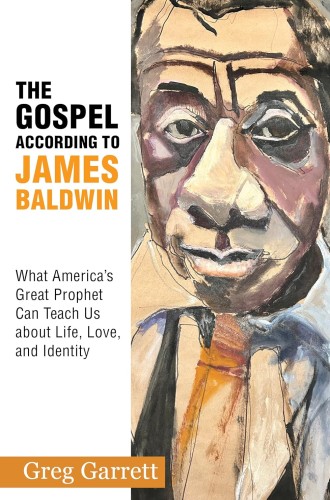Navigating James Baldwin’s legacy
Greg Garrett provides a road map for the terrain of the prophetic writer’s work and thought.

The Gospel According to James Baldwin
What America’s Great Prophet Can Teach Us about Life, Love, and Identity
Some months ago, inspired largely by this magazine’s content (see “Baldwin the exorcist,” November 2022), I declared for myself a Year of Baldwin: for 12 months, all of my nonfiction reading material would be the essays of James Baldwin and most of my fiction reading would be his novels. After a few months, I already felt like part of that nameless club, stretching back 70 years, of straight White progressive Christians who can’t get enough of this queer Black intellectual’s incisive prophetic work. So when I was invited to read and review a new book by another member of that club—theologian and English professor Greg Garrett—I jumped at the chance. (I technically had to break my reading rule, since this is a nonfiction book not written by Baldwin. But an ode to Baldwin that analyzes his writings adheres to the spirit of my strange law.)
In preparation for this book, Garrett read everything Baldwin ever wrote, in addition to watching his recorded interviews and the movies about him or based on his work. Garrett also went on a pilgrimage through the most important locations on Baldwin’s journey: Harlem, Paris, and a small village in Switzerland. While this globe-trotting plays only a tiny role in The Gospel According to James Baldwin, Garrett’s close and astute reading of Baldwin’s catalog of writings comes through on nearly every page.
The introductory chapters, which include a biography and a prophetic framing of Baldwin, lead readers to the heart of the book: five chapters on enduring themes in the writer’s work. When Garrett chose these themes, he “tried to listen to Baldwin’s words, to let him teach me what he had to say, not to try to fit them into some framework of my own devising.” The topics he discerned Baldwin teaching him about are culture, faith, race, justice, and identity. These five chapters are worth the price of the book, and they are ordered in a way that allows Baldwin’s insights to build upon each other.





